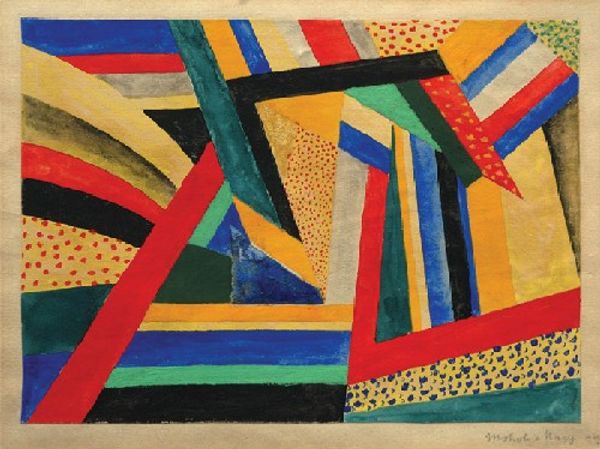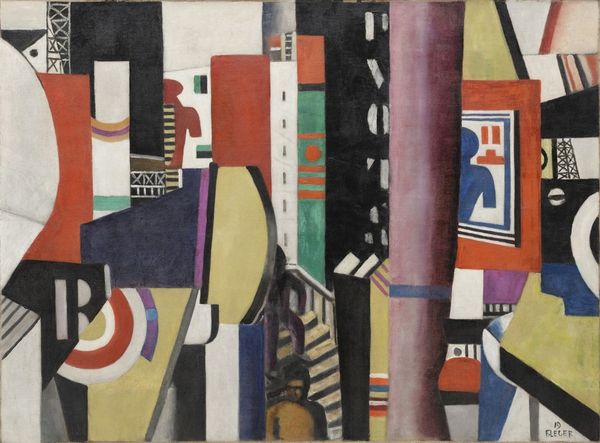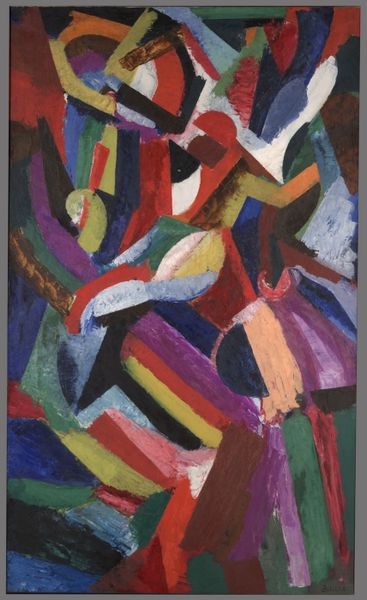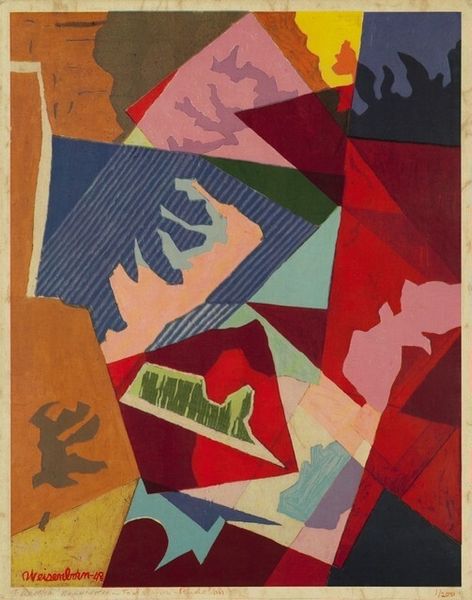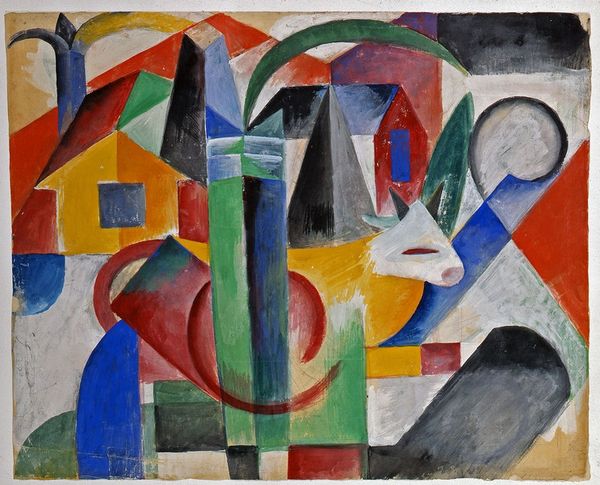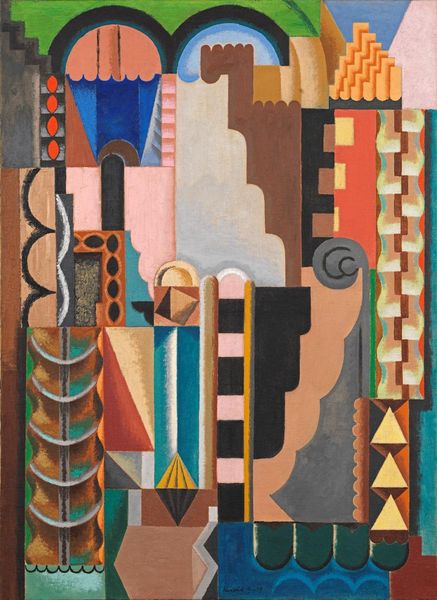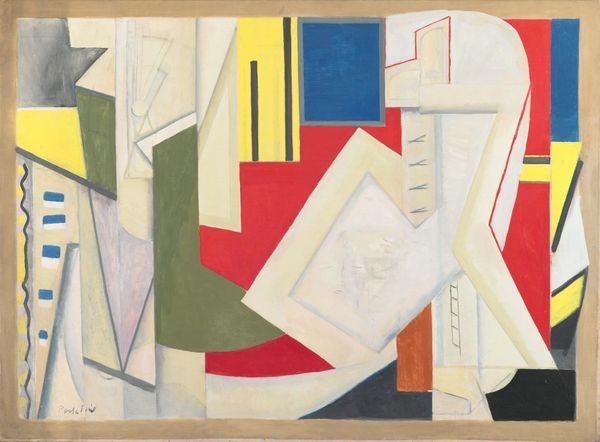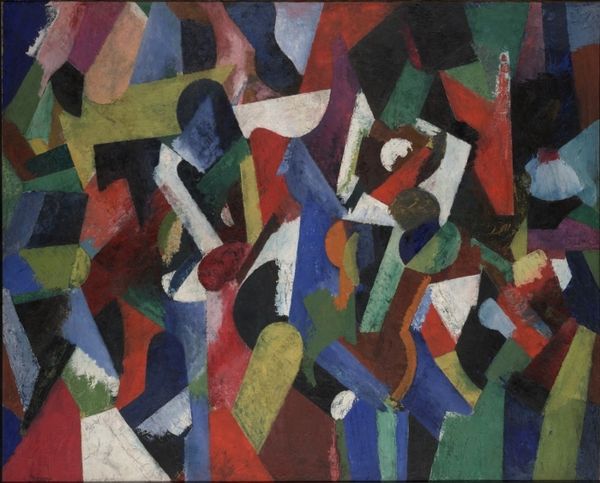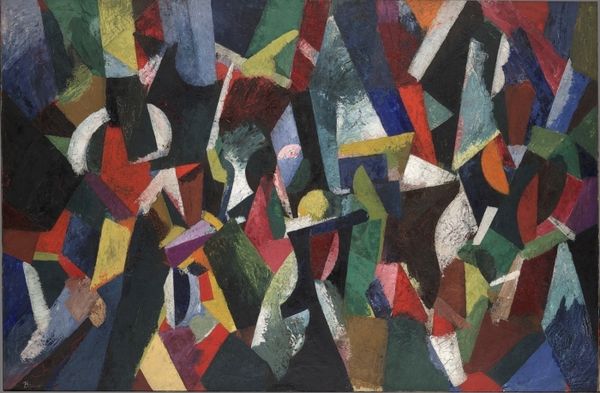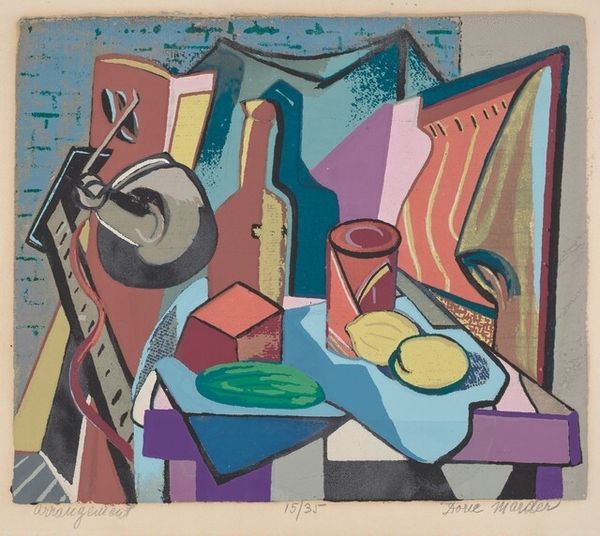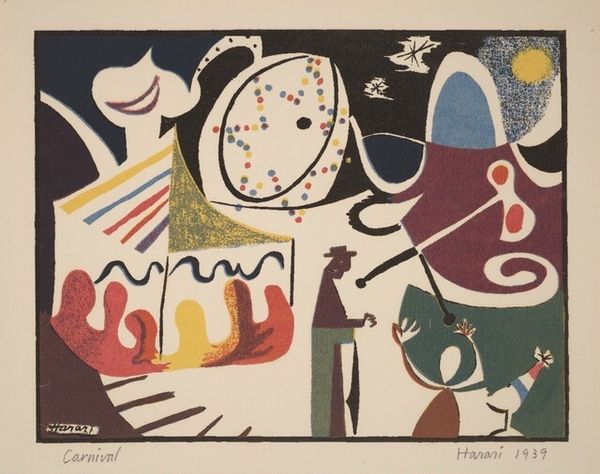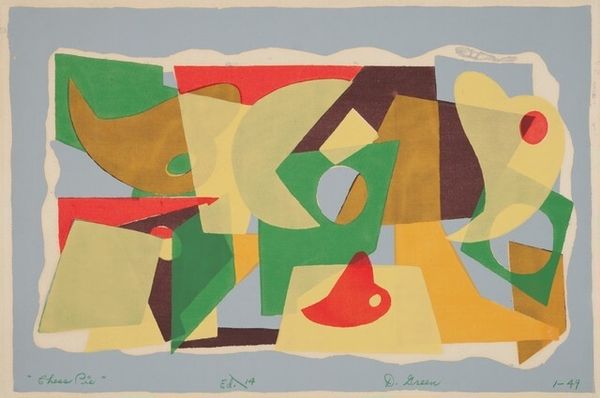
#
folk-art
#
folk-art
#
naive art
#
watercolor
Dimensions: overall: 44.2 x 57.2 cm (17 3/8 x 22 1/2 in.)
Copyright: National Gallery of Art: CC0 1.0
Curator: Ah, there’s such warmth in this work! Dolores Haupt’s "Crazy Quilt," circa 1938, primarily rendered in watercolor and textile patterns on what appears to be paper, offers a striking study in color and form. What do you make of it? Editor: It's…unexpected. At first glance, a joyous jumble. The apparent randomness creates a rather engaging optical effect. Curator: Indeed. Note the interplay of geometric shapes, a calculated arrangement—triangles, curves, parallelograms, carefully situated within the overall framework. How do you interpret this composition? Editor: Well, chaos is inherent, I think. Crazy Quilts are, by definition, improvisational, aren't they? Patches accumulated across time reflecting particular memories. Note the recurring motif of half circles radiating around central hubs - sunbursts maybe? A life force rendered in pattern. Curator: Fascinating observation. If we consider Pattern and Decoration, though, the lack of hierarchical focus begs deconstruction. What underlying structure dictates these placements, if any? Haupt flattens depth by manipulating hue and tone. The lack of traditional perspective compels a pure engagement with surface. Editor: Perhaps, but doesn’t this surface allude to histories lived and stitched together? The materiality evokes domesticity. These shapes once clothed bodies, warmed beds… Aren't quilts traditionally collaborative pieces embodying a collective past? This “naive art”, as some call it, tells unspoken stories. Curator: Intriguing concept. But can we be certain such narrative readings hold, or do we impose that assumed domestic narrative on works that challenge traditional hierarchies? Doesn’t its status as "drawing" resist simple classification, further abstracting its inherent meaning, leaving pure color and arrangement as primary communicators? Editor: Maybe, maybe not. Symbols embed themselves into textiles, becoming subconscious artifacts. Whether by intention or accident, I discern emotional resonance within Haupt’s chromatic tapestry. The bright sections almost sing amidst more muted fragments, narrating resilience and optimism perhaps, pieced carefully from what survives. Curator: That tension—between rigid analysis and symbolic interpretation—enriches our appreciation, doesn’t it? By recognizing these diverse elements in its structure and inherent forms we grasp the conceptual heart of this work. Editor: Yes. “Crazy Quilt”, I suspect, carries more stories than will ever meet the eye.
Comments
No comments
Be the first to comment and join the conversation on the ultimate creative platform.

